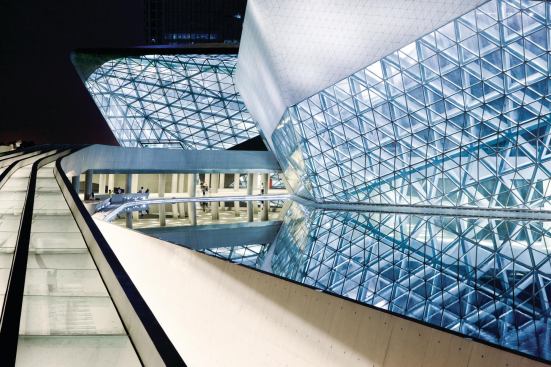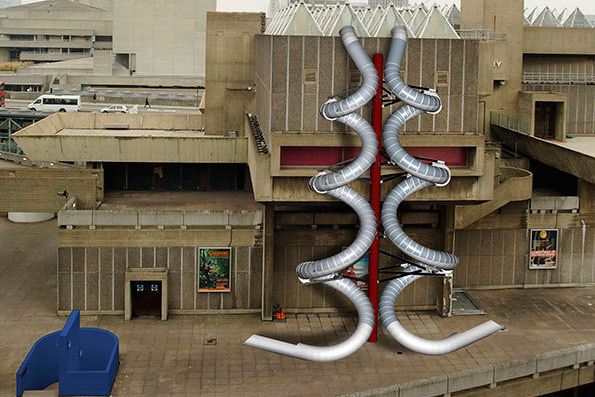What is wrong with spectacle? Kriston Capps, late of this periodical, recently launched into museums for presenting large-scale, immersive experiences. His argument came against a drumbeat of articles, posts, and screeds that decry structures and spaces that are iconic, spectacular, and just make you go “wow.” Even the almost pathologically assertive Patrik Schumacher has been reduced to claiming via Facebook that his firm, Zaha Hadid Architects, does not aim to create icons—they just sort of happen as the practice pursues serious architecture.
What Mr. Capps does not seem to understand is that just because spectacles attract crowds and please them, they are not bad. Nor are buildings that bring hordes of people to see them and leave us standing agape as we marvel at their sinuous curves or cavernous spaces. But to Capps, “if museums insist on commissioning artists to work at the glib scale of starchitecture, then it’s time to start thinking of museums as malign developers.” Why? Because there are too many of the spectacles, they are “silly,” and because they are expensive, meaning fewer artists get a chance to produce them while smaller museums may suffer as they try to keep up with Mothership MoMA. This, I guess is what Capps means when he says the phenomenon is “…taking a toll, culturally, on museums and their place in the civic realm.” Curmudgeon Jerry Saltz adds that there is too much distance between traditional painting and these spectacles, leaving the latter in the dust. That is a pretty damning assessment of those canvases.
The civic realm, however, is exactly what the best (and, Lord knows, there are, as in all art and architecture, far more examples of the bad than the good) art spectacles open up. In attracting larger amounts of people than traditional painting in sculpture, showing them art that is immediately accessible, and taking them into another place and time, museums can create an alternative to a world in which the Empire of Signs is ruled over by the Almighty Dollar and the experience is always that of either seduction and sale or paranoia and constraint. The best makers of these kinds of works of art, such as Tino Sehgal, Olafur Eliasson, or Marina Abramowic, and sometimes James Turrell and Carsten Höller, offer a critique of a world in which virtuality unmoors us and leaves us swimming in the sea of commerce. They instead make us think about our bodies, our social relations, and the manner in which the space of self and society is framed.
The same is true of truly spectacular buildings. The architect Charles Moore used to talk about “the Jesus Christ moment” —that point when the weary traveler, arriving at a Portman Hotel, schlepps through the low and dark entry, and then arrives into the lobby, watches it shoot up above him and exclaims the Son’s name. Such an experience makes you feel small, but also part of a much larger structure. It can create an out-of-body experience, despite the fact that you are just in a hotel. Even the Guangzhou Opera House, designed by Hadid, and seemingly put together with spit and chewing gum rather than rational building technology, inspires a moment of awe that actually extends as you explore its lobbies and auditoria.

Iwan Baan
The Guangzhou Opera House is a complex of two buildings: the main 1,804-seat theater (at left) and a 443-seat multipurpose space (at right).
Spectacle only work as an eruption on occasional events and in a few places. Trying to make one is difficult, and most artists and architects fail. What is even more complex is the task of rescuing the spectacle from becoming just another sales tool. Too often you just get a neat effect or fun ride down one of Höller’s signature slides. Yet museums have an uncanny ability to, at least at times, drink in vast amounts of capital, use it to brand and advertise themselves, process you like so much ticket-paying meat—and then deliver a critical punch, or perhaps just an experience that makes you think about where and who you are. Sometimes a single painting or a simple building can do that—I can get chills from a small Gerhard Richter abstraction or Aalto’s Woodland Chapel—but more often than not, in a world where we are so overwhelmed and oversold, it takes more than that. I would rather we spend the money on such spectacles than on that of bombs bursting in air or minimalist lofts in the sky for the superrich. Beam me up, please, Scotty, I am ready to be amazed.
